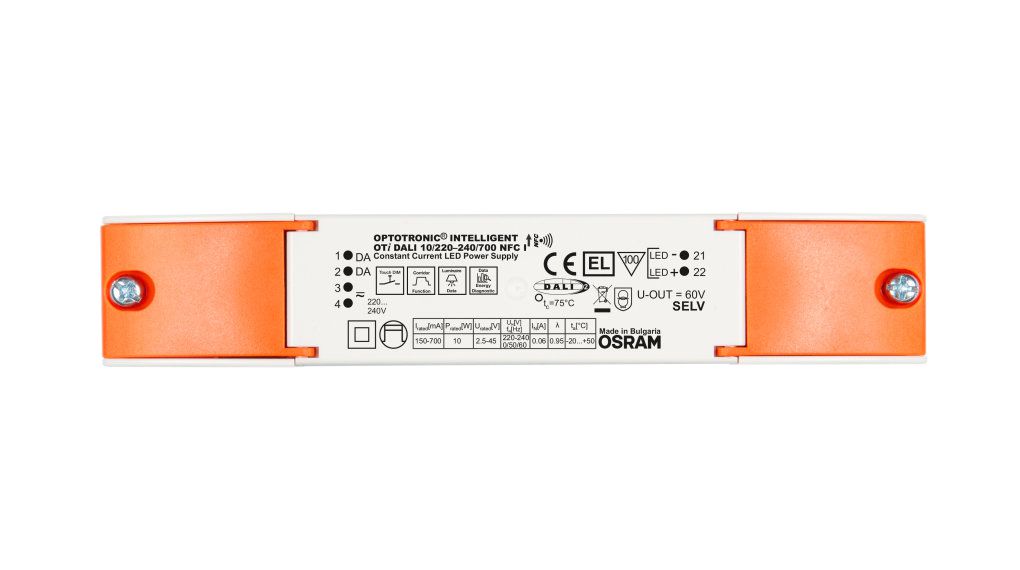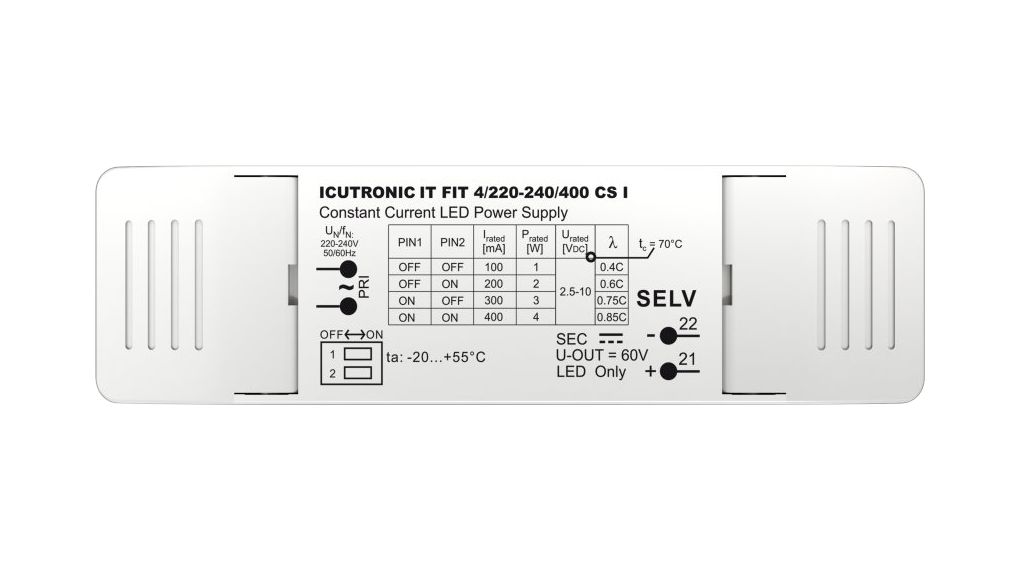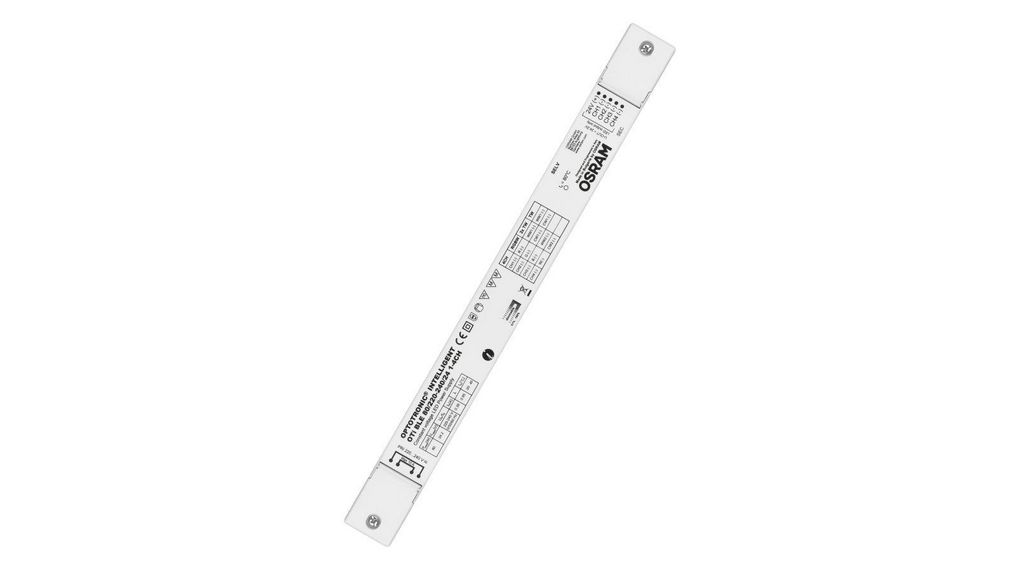
James Prietzel, Product Manager at Intelligent LED Solutions (ILS)
James is the ILS Product Manager for everything related to LEDs and has been with ILS since 2012. James is dedicated to understanding the latest technologies and innovations from leading suppliers in the OptoElectronics world, from optics, to LEDs and to Intelligent LED Drivers.
The ILS team is here to help you select the optimal LED driver for your project. We offer a variety of OSRAM DS power supplies, as well as our own ILS power supply product range.
What to consider when choosing an LED driver:
- Constant current (CC) or Constant voltage (CV) – Depending on your LED modules and application you may require CV or CC.
CC LED drivers are a popular choice for LED applications and are suitable for use with LED chains or single LEDs operating in series. Series refers to multiple LEDs mounted and linked together with the current flowing through them all. Within a series, if the circuit is not broken, all LEDs will receive current and operate as expected. However, if the circuit is broken, none of the LEDs will be powered. CC LED drivers keep a constant electric current throughout an electric circuit by having a variable voltage. In comparison to constant voltage CC LED drivers which tend to offer a more efficient circuit and better control.
CV LED drivers, on the other hand, supply a set voltage to the electronic circuit. CV LED drivers are ideal for a parallel circuit made up of multiple LEDs. For example, they are best suited for LED modules with either a driver IC (integrated chip)[LA1] [SH2] on board or a current limiting resistor, such as an LED strip. The voltage requirement of the entire LED chain must match the voltage output of the CV LED driver.
- IP Rating – For an LED driver to be used outdoors, an IP rating of IP65 is required. Likewise, if the application requires a driver that can be submerged in water, IP67/IP68 will be needed. Alternatively, if the application is indoors and the LED driver does not need protection from the elements, a driver IP rating of IP20 would be suitable.
- Dimming – Your LED module and application may need to dim the brightness of the LEDs. Dimming is possible via several methods. These include:
0-10Volts
For direct current voltage (DC) between 0 and 10 volts.
– This can produce light at varying intensity levels. 0-10V dimming is the simplest control system for lighting, providing smooth operation and dimming down to 10%, 1%, and even 0.1% light level.
Mains dim
Phase cut, triac dimming, leading edge, or trailing edge.
– This reduces the electrical energy level flowing through the LEDs, thereby causing them to dim.
Pulse-width modulation (PWM)
A common type of dimming used to adjust the current in white-LED driver devices.
– PWM dimming takes a rectangle waveform with variable positive duty cycle and adjusts the LED current proportionally.
Dali
– These dimmer switches use a digital protocol to send a dimming control signal to a driver down separate wires to the mains supply. They do not directly control the energy passed to the driver.
Wireless
This works by sending wireless signals through your home Wi-Fi or mesh network. These wireless switches can control lighting, ceiling fans or anything connected to the switch, including adjusting the brightness of your lights.
- Output current – Relevant to CC LED drivers.
Your driver’s output current needs to match the requirements of the LED you are driving. I.e., if your LEDs need 350mA then your LED drivers output needs to be 350mA also. Output current is a value given in amps (A) or milliamps (mA). 1000mA make up 1A. To use a CC driver, make sure to check the current requirements of your chosen LED(s). This can typically be found within the LED’s datasheet.
Your LED’s required current must match or fall within the output current range of the CC LED driver. Using a higher current than recommended for the LED will wear the LED out a lot quicker, reducing its lifetime. Whereas running the LED at a lower current would have the opposite effect.
- Output power – Measured in Watts (W), the LED driver you choose, should have an output power that is at least the same value as your LED’s power requirements. Ideally though, the output power should be higher than the LED’s power needs. This is because if the driver’s maximum output is equal to the power requirements of the LED, then the driver will be operating at full power. This may shorten the LED driver’s life span.
Secondly, the power requirement of the LEDs tends to be calculated as an average, with tolerance added on top for multiple LEDs, so ideally you should have a higher output power from the driver to factor this in.
- Output voltage – Measured in Volts (V), referring to the voltage produced by the LED driver and supplied to the chosen LED(s). For CC LED Drivers, the output voltage needs to exceed the voltage requirements of the entire chain of LEDs you are trying to drive. For CV LED drivers, the voltage required by your LEDs needs to match the output voltage of the LED driver.
- Dimensions – Make sure the LED driver you chose fits any space limitations you may have.
- Lifetime – All LED drivers tend to come with a lifetime expectancy of thousands of hours. This value is known as MTBF, which is the ‘mean time before failure’. To extend the lifetime and reduce maintenance costs and time, make sure to run your chosen LED driver with the recommended outputs.
Recommended products
ILS Constant Current LED Driver, 8W, 3-36V, 350mA, IP65

OSRAM OPTOTRONIC Intelligent Compact Constant Current LED Driver, Dimmable

OSRAM ICUTRONIC FIT Compact Constant Current LED Driver, Non-dimmable

OSRAM Constant Voltage LED Driver 24V with Bluetooth











